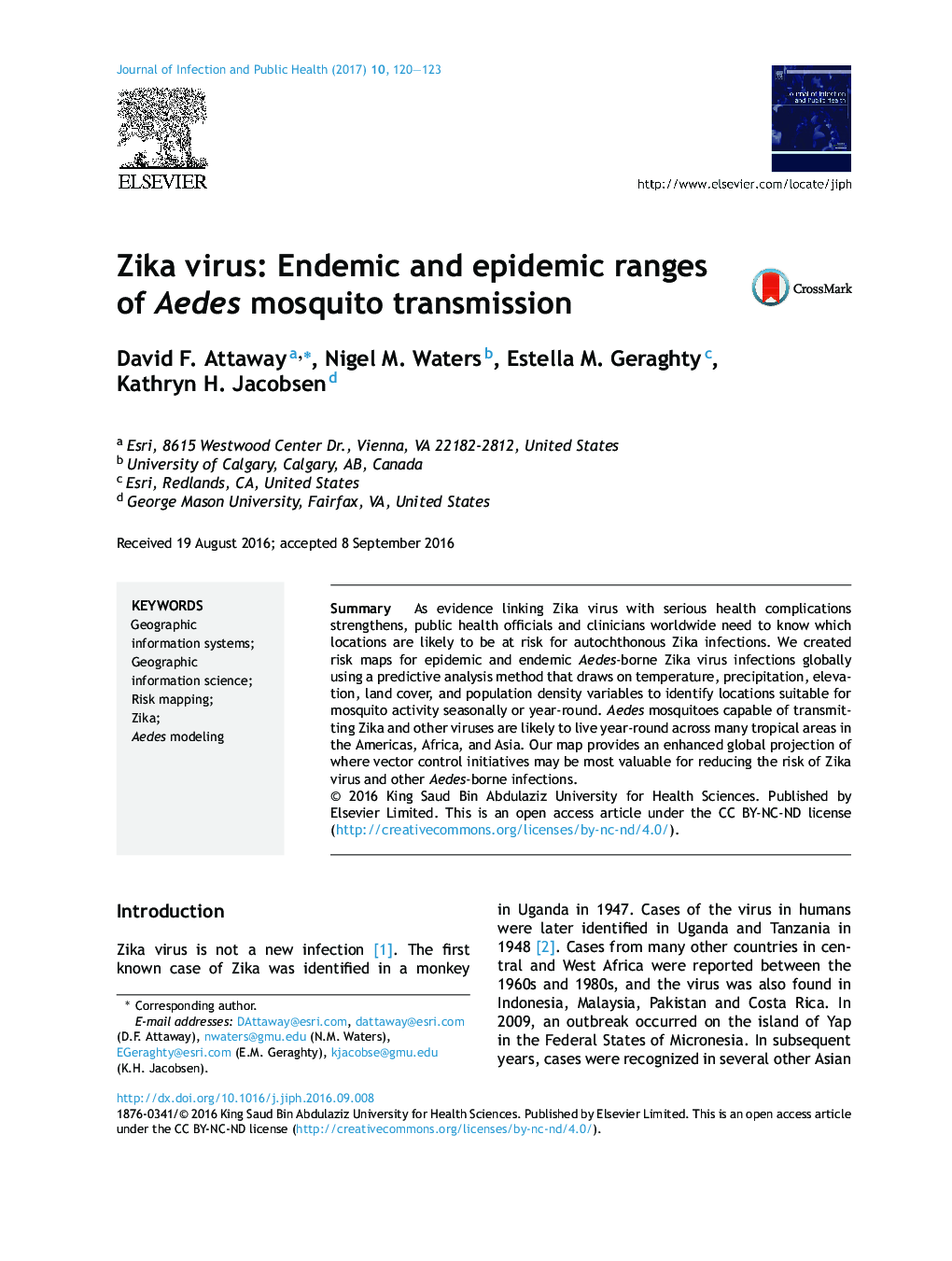| Article ID | Journal | Published Year | Pages | File Type |
|---|---|---|---|---|
| 5672829 | Journal of Infection and Public Health | 2017 | 4 Pages |
SummaryAs evidence linking Zika virus with serious health complications strengthens, public health officials and clinicians worldwide need to know which locations are likely to be at risk for autochthonous Zika infections. We created risk maps for epidemic and endemic Aedes-borne Zika virus infections globally using a predictive analysis method that draws on temperature, precipitation, elevation, land cover, and population density variables to identify locations suitable for mosquito activity seasonally or year-round. Aedes mosquitoes capable of transmitting Zika and other viruses are likely to live year-round across many tropical areas in the Americas, Africa, and Asia. Our map provides an enhanced global projection of where vector control initiatives may be most valuable for reducing the risk of Zika virus and other Aedes-borne infections.
